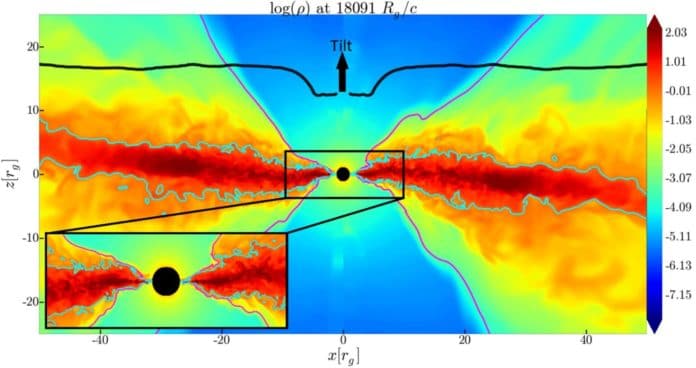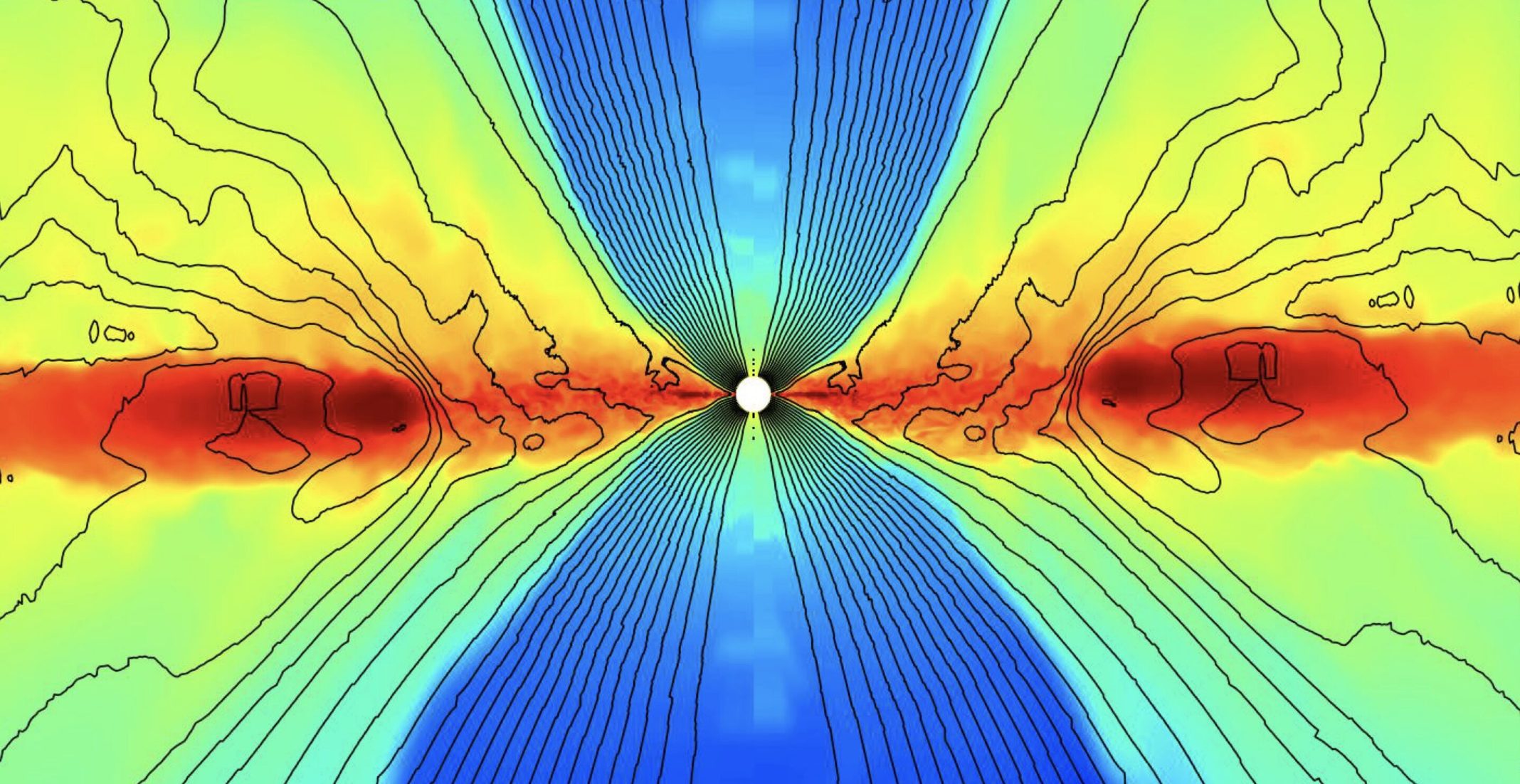Using a custom-built code and a supercomputer, an international team of scientists has created the most detailed, highest-resolution simulation of a black hole to date. The simulation proves theoretical predictions about the nature of accretion disks that have puzzled astrophysicists for 45 years.
Among the findings, the team of computational astrophysicists from Northwestern University, the University of Amsterdam, and the University of Oxford found that the innermost region of an accretion disk aligns with its black hole’s equator.
This discovery solves a longstanding mystery, originally presented by Nobel Prize-winning physicist John Bardeen and astrophysicist Jacobus Petterson in 1975. At the time, Bardeen and Petterson argued that a spinning black hole would cause the inner region of a tilted accretion disk to align with its black hole’s equatorial plane.
While that may seem somewhat confusing and inconsequential, how this region is warped by the black hole can have huge effects on entire galaxies. In a new study, the simulation found that, whereas the outer region of an accretion disk remains tilted, the disk’s inner region aligns with the black hole. A smooth warp connects the inner and outer regions.
In addition, the study details a simulated solution to the theory — known as the Bardeen-Petterson effect and solves a problem that has puzzled astronomers for more than four decades.
The team solved the mystery by thinning the accretion disk to an unprecedented degree and including the magnetized turbulence that causes the disk to accrete. Previous simulations made a substantial simplification by merely approximating the effects of the turbulence.
Northwestern’s Alexander Tchekhovskoy, who co-led the research, said, “This groundbreaking discovery of Bardeen-Petterson alignment brings closure to a problem that has haunted the astrophysics community for more than four decades. These details around the black hole may seem small, but they enormously impact what happens in the galaxy as a whole. They control how fast the spin of the black hole and, as a result, what effect black holes have on their entire galaxies.”
Scientists used graphical processing units (GPUs) to develop their simulation’s code.
Tchekhovskoy said, “Once we created the code, we needed to find a large enough supercomputer to carry out the simulations. The National Science Foundation supercomputer, Blue Waters, was just right for the task.”
Blue Waters is an immensely powerful computer operating with 1.5 petabytes of memory, and is housed at the University of Illinois at Urbana–Champaign, Illinois.
Tchekhovskoy said, “We put a black hole inside of a computer and drop gas on it. Initially, the gas orbits around the black hole at a plane tilted relative to the black hole equator. However, over time the inner regions of the disk align with the equatorial plane, revealing the alignment.”
Rebecca Nealon, a theoretical astrophysicist at the University of Leicester not associated with the study said, “The unique aspect of these simulations is their treatment of the magnetic fields, general relativistic effects and a cooling function at the same time. Their results showing the Bardeen-Petterson effect while including these is an excellent confirmation of the general picture found in previous works.”
Tchekhovskoy reported, “The fields are a key factor in regulating how the accretion disk bends and falls into it. Ultimately, the researchers found that even for incredibly thin accretion disks, the proposed Bardeen-Petterson effect held up — accretion disks did align to the black hole.”
“The alignment of the disk with the black hole equatorial plane is the new finding of this work. At larger radii, the disk is tilted relative to the equatorial plane of the black hole.”
“The next phase of the research will look at radiation transport. Essentially, the team will be able to predict what would happen to the particles of light that are produced during this process, giving astronomers a potential way to view the phenomenon via telescope.”
Journal Reference
- M Liska, A Tchekhovskoy, A Ingram, M van der Klis, Bardeen–Petterson alignment, jets, and magnetic truncation in GRMHD simulations of tilted thin accretion discs, Monthly Notices of the Royal Astronomical Society, Volume 487, Issue 1, July 2019, Pages 550–561, DOI:10.1093/mnras/stz834

